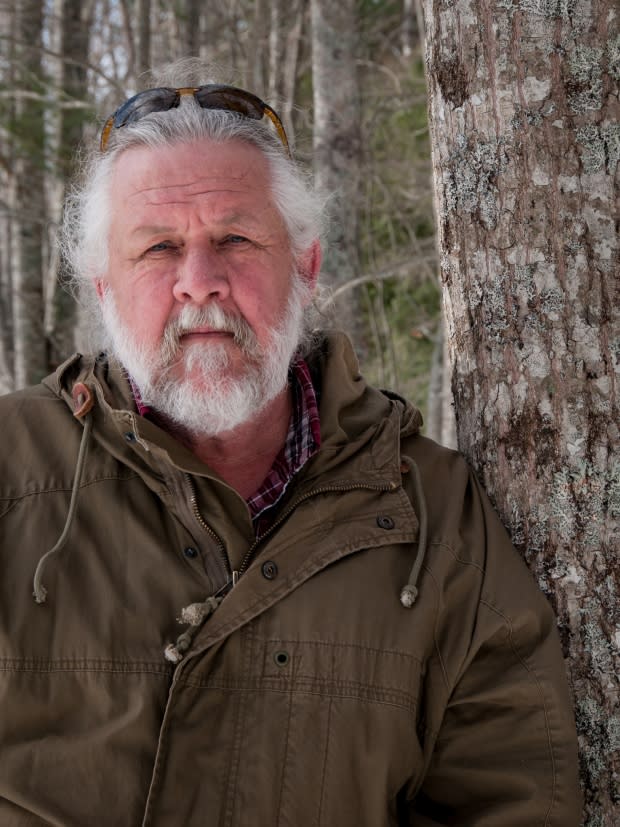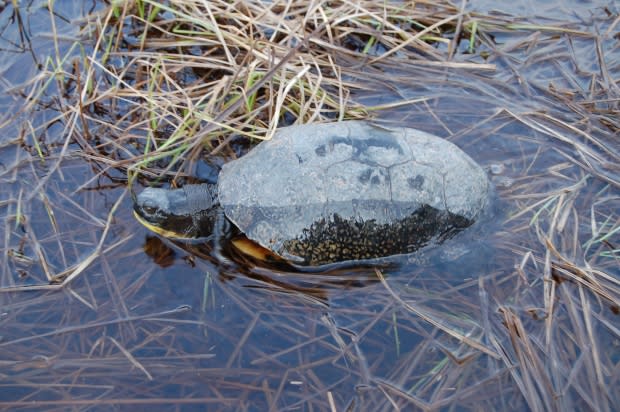3 of 4 turtle species in Nova Scotia at risk of extinction
This is the fifth in a series of stories from CBC Radio's Information Morning about species that are struggling to survive in Nova Scotia, and the people who have vowed to save them.
There are only four species of turtles in Nova Scotia, and three of them are at risk of extinction, according to an Acadia University researcher.
Steve Mockford, associate professor of biology at Acadia, told CBC Radio's Information Morning Nova Scotia that the province is home to few reptiles, but those that do live here face "threats that are commonly associated with human activity."
The Blanding's turtle is at the greatest risk of extinction. Mockford said Monday they live in four separate areas around the province: Kejimkujik National Park and National Historic Site, McGowan Lake, Pleasant River and Bang's Falls.
He also said since they were first mentioned in Nova Scotia in the 1950s, their numbers have always been low. Mockford estimates there are fewer than 500 adult Blanding's turtles left in the province.

Turtles are a challenge for conservationists because their long lifespan includes a 15- to 20-year period before maturity. Waiting for them to gain maturity before they reproduce means growth in population takes a long time.
"So here's both the excitement and the frustration of working with something like a turtle," said Mockford. "The very first nest that we protected [17 years ago], those individuals are only just coming into sexual maturity now."
And reaching maturity comes with challenges of its own.
Many other animals, like raccoons, target the nests for eggs or prey on the young turtles. But Mockford said efforts to increase juvenile recruitment have been working well in Nova Scotia.
However, once the turtles are mature, they face another obstacle.

Some of their habitats — boggy areas like the edges of lakes and streams — face modification that challenges the species' survival when humans come along.
"As cottage development increases, then so does modification of lakefront habitat," said Mockford.
Conservationists and scientists work to educate homeowners about how they can modify their property while still maintaining a viable habitat for wildlife.
Adding or removing sand from an area, clearing brush, and lawn mowing are all human activities that threaten at-risk reptiles in these areas
The soil on the side of the road is an ideal place for a turtle to lay eggs. But while the sand is good for nesting, Mockford said the location puts the turtles at greater risk for interaction with vehicles.

And while people may be sympathetic to the well-being of turtles, other reptiles such as snakes can be an entirely different matter. Nova Scotia is home to five snake species, including the Eastern ribbonsnake, which is also at risk.
"People will swerve on roads to run over snakes," Mockford said.
Despite this, Mockford said he's hopeful about conservation efforts for turtles and snakes.
He cited a common conservation adage: "Wildlife management is really people management."
And he said the work they've done with the Blanding's turtles might be working — it's just too soon to know for sure.
Mockford believes educating the public about the role wildlife plays in the environment and about harmful human behaviours is a good way to help at-risk species.
"They're an integral part of the system. It's a mistake to think we can let this species go or that species go," said Mockford. "These things have inherent value, too. They exist and they should continue to exist."

